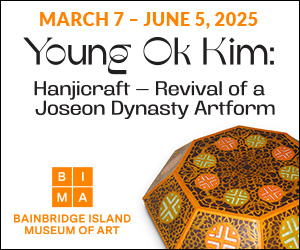
The Opulent Art of Myrlande Constant: A Deep Dive into Her Lavish Creations

Myrlande Constant and the Spiritual Artistry of Drapo Vodou
Haitian artist Myrlande Constant is transforming perceptions of textile art with her captivating, intricate works that blend Vodou spirituality, history, and cultural identity. Her latest exhibition, The Spiritual World of Haiti, at Fort Gansevoort gallery in Manhattan, provides a vibrant showcase of her career, spotlighting her rare command of an art form historically dominated by men — the drapo Vodou (Vodou flag).
Rooted in Reverence: The Origins of Drapo Vodou
Drapo Vodou, or Vodou flags, are richly ornamented ceremonial banners rooted in Haitian Vodou, a syncretic religion blending West African spiritual traditions with Catholicism and other influences. Traditionally used during rituals to honor “lwa,” or spirits, these flags are crafted with beads, sequins, and appliqué on cloth. Historically, the art form was largely practiced by men and limited to religious spaces.
Myrlande Constant, however, has boldly reshaped that tradition.
A New Voice in a Male Tradition
Born in Haiti, Constant learned embroidery through tambour stitching while working with her mother in a wedding gown factory in Port-au-Prince. Often considered a more “feminine” technique, tambour embroidery involves hook-style stitching and laid the foundation for her future in drapo Vodou, a sphere where she would later become one of the first recognized female artists.
Constant brought a couture sensibility and narrative richness to Vodou flags, transitioning them from purely functional religious objects into powerful works of fine art suitable for museum walls and galleries. Her practice doesn’t abandon spirituality — quite the opposite. Instead, she expands its visual language to encompass themes of sociality, femininity, history, and identity.
A Journey Through “The Spiritual World of Haiti”
The exhibition at Fort Gansevoort, curated with just ten extraordinary pieces, acts as both retrospective and statement of purpose. At its core is “Devosyon Makaya” (2021–24), a monumental piece stretching nearly 12 feet in length. Opulent and overflowing with detail, the work is a riot of color: glimmering reds, verdant greens, and golden spirals animate a depiction of the Makaya, a secret society in Haitian lore associated with spiritual cleansing and resistance.
The piece exemplifies Constant’s ability to collapse the borders between the sacred and the secular, between the mystical and the communal. Fine glass beads and reflective sequins create a kaleidoscopic scene that feels alive and shifting under changing light.
Other works in the exhibition, such as “Au nom de 29 points cimetiere par pou voir Baron Samedi,” delve into the Vodou festival of the dead — Fèt Gede — capturing revelers clad in the signature purple, black, and white of the Gede spirits. The layering of figures above skulls, crosses, and other memento mori evokes a celebration of life in communion with the dead.
Feminist and Political Narratives
While much of Constant’s work celebrates the spiritual, it’s also fiercely political and personal. In her piece “Jean-Jacques Dessalines” (c. 2017), Constant memorializes one of Haiti’s revolutionary heroes and its first independent leader. Through embroidery, she commemorates both national pride and the ongoing relevance of revolutionary history.
She also honors female figures of power within the Vodou tradition. “Marinette Bois Chèche” (c. 1990s) is one such piece; it commemorates a Voudou priestess associated with justice and fire and revered in feminist interpretations of the faith. Rendered in minimalistic whites, it contrasts with her more opulent pieces, letting spiritual strength speak through visual austerity.
Global Acclaim, Local Roots
Despite accolades from the international art world — including a career survey at UCLA’s Fowler Museum in 2023 and inclusion in the prestigious 2022 Venice Biennale — Constant continues to live and work in Haiti. Her unwavering commitment to her homeland, even amid political instability and social unrest, enhances the emotional gravity of her work. Each piece is a testament not only to her technical mastery but to her resilience and cultural fidelity.
Conclusion: Threads of the Sacred and Social
Myrlande Constant’s work exemplifies the transformative power of art to transcend categories. What was once a niche, male-dominated religious craft has become, under her hands, a powerful form of feminist, spiritual, and sociopolitical expression archived and exhibited across the globe.
By intertwining Haiti’s vibrant spiritual legacies with contemporary modes of expression, Constant stitches together the sacred and the secular, past and present, public celebration and private devotion — in beads, sequins, and unwavering purpose.
The Spiritual World of Haiti is on view at Fort Gansevoort in Manhattan through April 26. It is a vibrant testament to one of the most visionary textile artists of our time